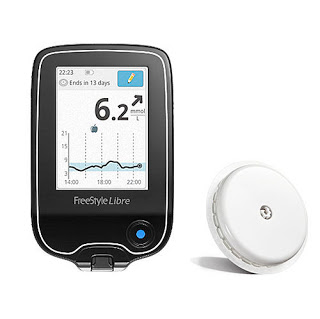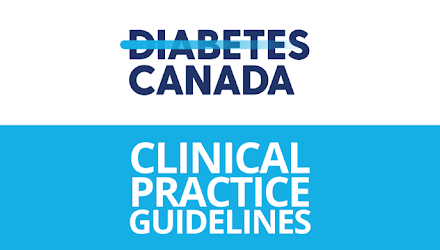At a symposium yesterday at the American Diabetes Association meeting, I was delighted and honored to present the PIONEER PLUS study of high dose oral semaglutide in type 2 diabetes, along with presentation of the OASIS 1 study of high dose oral semaglutide as an obesity treatment.
Helping people with type 2 diabetes get blood sugars to targets, and helping those (90%) living with overweight or obesity manage weight, are important goals of treatment, alongside cardiorenal protection. GLP1 receptor agonists (GLP1RAs) are one of the classes of medications that can achieve these goals. Most GLP1 receptor agonists are prescribed in injectable form, but some people may not want to take an injection, and some prescribing doctors may feel that it is easier to prescribe a pill. Oral semaglutide (trade name Rybelsus) is the only GLP1RA that is currently available in a pill form for treatment of type 2 diabetes at a dose up to 14mg daily (note that the injectable form of semaglutide for type 2 diabetes is called Ozempic). Prior data have shown that higher doses of oral semaglutide result in additional improvement in sugars and weight reduction, and having higher doses available would provide the option to intensify treatment in people who need it to reach their goals.
The PIONEER PLUS study, published simutaneously in The Lancet (disclosure: I am a co-author and investigator), evaluated the efficacy, safety, and tolerability of oral semaglutide at doses of 25mg and 50mg daily, compared to 14mg daily, in 1,606 people with type 2 diabetes. At 52 weeks, A1C reduction was significantly greater with semaglutide 50mg (-2.0%) and semaglutide 25mg (-1.8%) vs semaglutide 14mg (-1.5%). Weight loss was significantly greater with oral semaglutide 50mg (-8.0kg) and semaglutide 25mg (-6.7kg) vs semaglutide 14mg (-4.4kg). Gastrointestinal side effects were the most common, in keeping with the GLP1 class, and increased with increasing dose. Most GI side effects were mild to moderate, short duration, and occurred during the dose escalation phase.
For people with overweight/obesity without diabetes, injectable GLP1RAs are a treatment option for weight management (semaglutide 2.4mg weekly (Wegovy), and liraglutide 3mg daily (Saxenda), both approved for weight management in people without or with type 2 diabetes), but there is currently no pill form available.
The OASIS 1 study, published simultaneously in The Lancet, evaluated the efficacy of oral semaglutide at a dose of 50mg daily along with lifestyle intervention, in 667 adults with obesity, or overweight and at least one weight-related health complication. At 68 weeks, mean weight loss was -15.1% with oral semaglutide 50mg vs -2.4% with placebo. Over half of participants (54%) in the oral semaglutide group achieved 15% weight loss (vs 6% of people in the placebo group). Physical functioning and cardiometabolic risk factors were also improved with semaglutide. Gastrointestinal side effects were most common with oral semaglutide and mostly mild to moderate in severity. Altered skin sensation was reported in 13% of people with semaglutide vs 1% with placebo, generally mild to moderate in severity, occurred during escalation to higher doses, and resolved without need to permanently stop medication. The safety profile was otherwise consistent with other studies of semaglutide and the GLP1RA class.
So what do these results mean for patients with type 2 diabetes, obesity, or both?
For a person with type 2 diabetes, higher dose oral semaglutide would give the option of a pill with flexible dose options, allowing titration of the dose upwards for better blood sugar and/or weight control (over and above the already available 14mg dose), rather than adding on ‘yet another’ medication. The weight loss seen in PIONEER PLUS with oral semaglutide 50mg daily was similar to that seen with injectable weekly semaglutide 2.4mg (Wegovy) in people with type 2 diabetes, and aligns with weight management as a priority of treatment of type 2 diabetes, alongside blood sugar control and heart/kidney protection.
For a person with obesity without diabetes, the results of the OASIS 1 obesity (non diabetes) trial are groundbreaking, in that no available oral weight management medication provides this magnitude of weight loss – weight loss similar to that of injectable semaglutide 2.4mg weekly (Wegovy).
Some people may prefer a pill rather than an injectable medication, and some doctors feel more comfortable or find it easier to prescribe a pill. Thus, higher dose oral semaglutide could broaden the choices available for weight management medication as well as offer flexible dosing to achieve blood sugar and weight targets in people with type 2 diabetes.
Disclaimer: I am an investigator in clinical trials of semaglutide. I receive honoraria as a continuing medical education speaker and consultant from the makers of semaglutide and liraglutide (Novo Nordisk).
Share this blog post using your favorite social media link below!
Follow me on twitter! @drsuepedersen
www.drsue.ca © 2023












